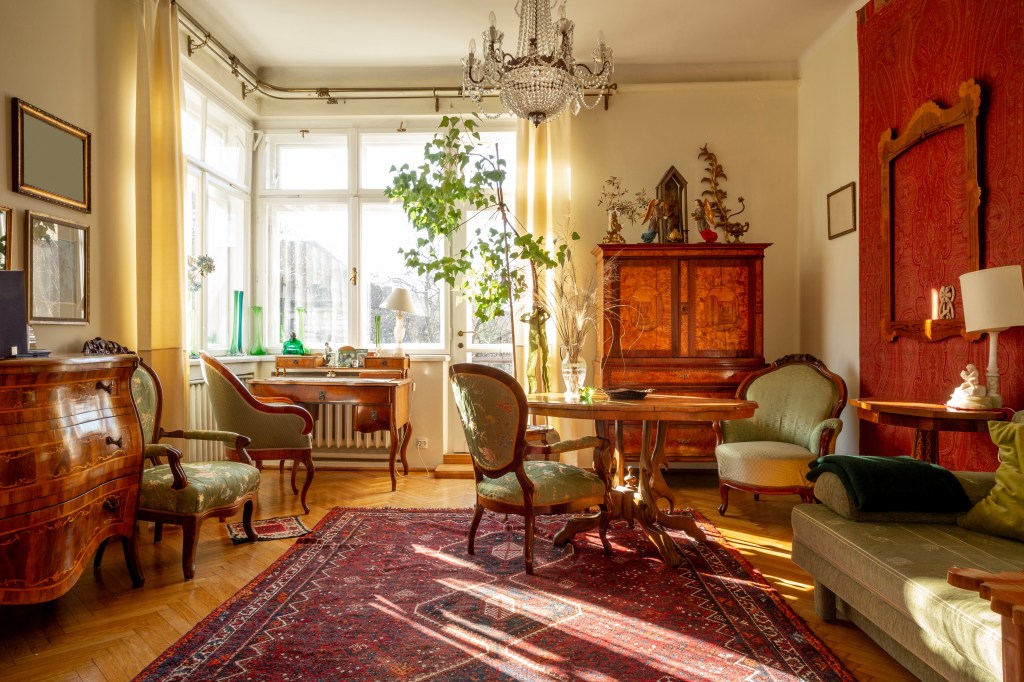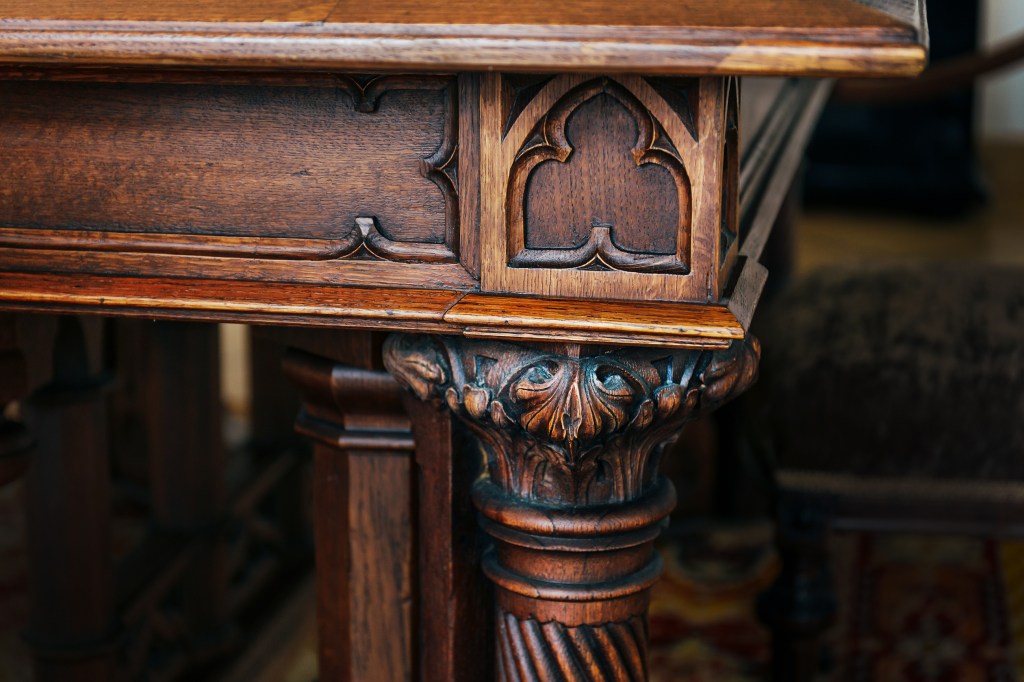
Collecting Custom and Handmade Furniture

Collecting Custom and Handmade Furniture
Introduction to Collecting Furniture
Venturing into handmade furniture collecting opens up a captivating world from timeless antique treasures to sleek, modern designs. This hobby invites enthusiasts to appreciate wood furniture’s aesthetic and functional aspects and delve deeper into each piece’s rich history and craftsmanship.
Over many years, the appreciation for vintage and handcrafted furniture has grown significantly. Collectors and admirers alike revel in the unique style each piece brings to a space, whether it’s a meticulously crafted antique furniture item or a modern, artisan-made creation. The craft involved in creating these pieces speaks volumes about their makers’ era, techniques, and personal stories.
Collecting furniture
Whether you’re drawn to the intricate details of a Victorian-era cabinet, the clean lines of a contemporary chair, or the communal charm of a well-crafted dining room table, collecting handmade furniture offers a unique way to connect with the past while curating a space that reflects your style and values. For those just beginning their journey as furniture collectors, the adventure is as much about discovering your taste and learning about different periods and different styles as it is about finding that perfect piece—be it coffee tables, sofas, bedroom sets, dining sets, chairs, benches, desks, or a bespoke piece of building furniture—to complete your collection.

The Art of Handmade Furniture
Delving into handmade wood furniture, one cannot help but be captivated by the sheer craftsmanship and elegance these pieces bring to any space. Each creation, often a labor of love by skilled artisans and craftsmen involved in the woodworking and furniture making process, embodies uniqueness and quality simply unmatched by mass-produced items. The timeless appeal of handmade, handcrafted furniture, especially when building furniture from scratch, enhances a home’s aesthetic and offers a wise investment opportunity.
Exploring different types of wood furniture showcases various materials and styles, ranging from classic hardwoods to exotic, sustainable options. The art of woodworking allows for diverse techniques in crafting these pieces, further customized with intricate upholstery to suit any personal style.
Handmade furniture & craftsmanship
As these pieces age, they often do so gracefully, acquiring character and potentially increasing in value over time. Investing in handmade furniture, such as the exquisite pieces from Purple Heart Fine Furniture, means investing in art you can use and appreciate daily.

How to Identify Quality Handmade Furniture
When identifying high-quality furniture, several key factors include materials, construction techniques, and finishes. High-quality furniture often utilizes durable materials such as solid wood, high-grade steel, or top-quality leather, which contribute to its longevity and aesthetic appeal.
Identifying furniture and construction techniques
The construction techniques are equally important; important things to look for are features like dovetail or mortise and tenon joints that indicate skilled craftsmanship and provide stronger connections of the wood than simple nails or glue. The furniture’s finish can also be a telltale sign of its quality. High-quality pieces typically have a smooth, consistent finish with attention to detail, indicating that time and care were taken in their creation.
By looking at these characteristics, you can discern the level of quality and craftsmanship in your furniture selections.

The Importance of Authenticity in Furniture Collecting
The significance of authenticity in furniture collecting cannot be overstated, as it remains a pivotal factor in determining the value and desirability of pieces among collectors and enthusiasts alike.
Authenticity in furniture collecting
Authenticity, in this context, refers to the genuine nature of furniture pieces, ensuring they are true to their origins, be it in terms of design, craftsmanship, or materials used. This authenticity is a testament to the piece’s historical and cultural significance and influences its monetary value in the market.
When searching for the value of a vintage furniture piece, it is essential to look for furniture marks, which are stamps, tags, and labels that confirm the creator, authenticity, and value of the piece. These marks, also known as a “maker’s mark,” should have the makers’ initials, whether handcrafted or created by a manufacturer, and some will even have the year or city in which they were made.
Different styles
It is crucial to indicate the time period when referring to styles. The hardware features and decor styles of different centuries can define various styles. For instance, mid-century modern furniture is typically characterized by clean lines and gentle curves made from solid wood and may contain a pop of accent color.
Collectors often seek out authentic pieces for their rarity and uniqueness, which drives their desirability.
Consequently, the authenticity of a piece directly impacts its appeal to collectors, making it a critical aspect of furniture collecting.

Insuring Your Furniture Collection
When considering the protection of valuable wood furniture collections, it’s imperative to understand why insurance is necessary and how to insure these assets effectively. Often comprising rare or antique furniture, furniture collections represent significant financial and sentimental value, warranting protection against potential loss or damage. Insurance coverage explicitly tailored for collectors of antique furniture and wood furniture pieces can provide this protection, offering peace of mind and financial security.
Collector’s insurance
Collector’s insurance typically encompasses a range of coverage types, including but not limited to damage during transit, theft, and environmental damage. By securing the right insurance policy, collectors can safeguard their investments, ensuring their cherished collections are preserved for future generations.

FAQ Section
What should I look for when purchasing vintage or antique furniture?
A: Focus on the quality of materials, craftsmanship, condition, and provenance to ensure you are getting a valuable piece.
How can I verify the authenticity of antique furniture?
A: Check for signs of age, manufacturer marks, and seek verification through expert appraisal services.
Why is it important to insure my furniture collection?
A: Insurance protects against financial loss due to damage, theft, or accidents, ensuring the value of your investment is maintained.
Sources
https://purpleheartfinefurniture.com/blogs/news/the-art-of-handmade-furniture-where-craftsmanship-meets-elegance
https://www.yorksaw.com/homemade-furniture-guide/
https://www.magnet.blog/post/for-the-love-of-furniture?lang=en
https://www.americasantiquemall.com/post/the-ultimate-guide-to-selling-antique-furniture-like-a-pro
https://www.ecoluxlifestyle.co/mid-century-modern-sustainable-furniture-home-decor-attic-treasures-gild-mcm-home-refind-wow/
https://www.shine.cn/feature/district/2403259435/
About Collectibles Insurance Services
Collectibles Insurance Services has been protecting collections since 1966 and all coverage is provided by a carrier with a group rating of “A” (Excellent) by AM Best, the leading rating agency for the insurance industry.
Comprehensive coverage includes, but is not limited to: accidental breakage, burglary, fire, flood, loss in the mail, theft, natural disasters, and other causes of loss unless specifically excluded from the policy. Deductibles start at $0 for collector policies and we provide coverage for the market value of your collection for losses in excess of $50.
Additionally the protection extends At home and away, and we don't require collection itemization and serial number nor extensive paperwork and red tape.
